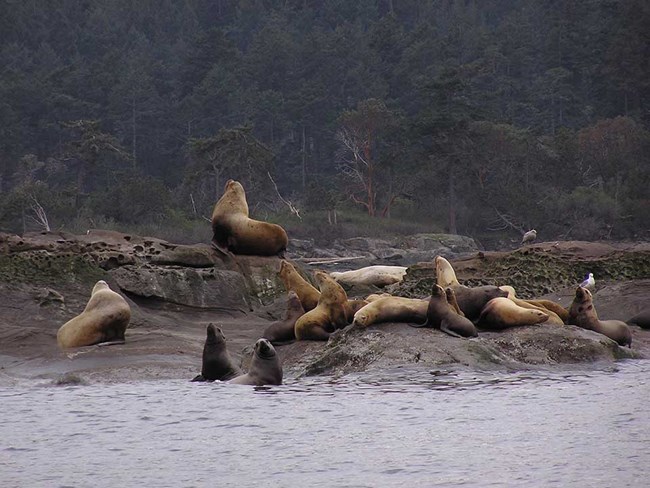Last updated: October 13, 2018
Article
Glacier Bay Steller Sea Lions

Steller sea lions have greater survival and more rapid population growth in Glacier Bay than other parts of Southeast Alaska. A recent study suggests that conditions are best here for foraging and breeding, which accounts for the movement of sea lions into Glacier Bay, their increased survival rates, and population growth.
Winter movements and long-term dispersal of Steller sea lions in the Glacier Bay region of Southeast Alaska
Abstract
Steller sea lions (Eumetopias jubatus) in the Glacier Bay region of northern Southeast Alaska experience greater survival and more rapid population growth than sea lions elsewhere in this region. To better understand demographics of sea lions in the region, and to describe the origins and behavior of sea lions and relate these descriptions to previous studies, we studied genetic origins, residency, foraging range, diving behavior, and dispersal of immature sea lions (≤24 mo of age) captured in Glacier Bay. Fifty-two percent of individuals had maternal origins in the distant (550 km) endangered western population rather than in the local recovered eastern population. During winter, 5 mo old pups, dependent on their dams for nutrition, remained within Glacier Bay, diving to shallow depths (≤108 m) mainly during daylight, whereas older (17 mo old) juveniles ranged more widely to areas of known seasonal prey aggregations, performing deep (≥241 m) nocturnal dives. Both pups and juveniles remained within the northern portion of Southeast Alaska, in contrast to farther-ranging pup and juvenile sea lions captured elsewhere in Southeast Alaska. Over the long term, females from Glacier Bay remained within this northern area through maturity and were sighted breeding in this area only. Restricted ranging patterns and natal and breeding philopatry by Steller sea lions of both eastern and western distinct population segment origin in the Glacier Bay region reveal that optimal foraging and breeding conditions likely prevail and help explain the recent colonization, increased survival, and rapid population growth of this species in the region.
Rehberg, M., L. Jemison, J. N. Womble, and G. O’Corry-Crowe. 2018. Winter movements and long-term dispersal of Steller sea lions in the Glacier Bay region of Southeast Alaska. Endangered Species Research 37:11-24.
